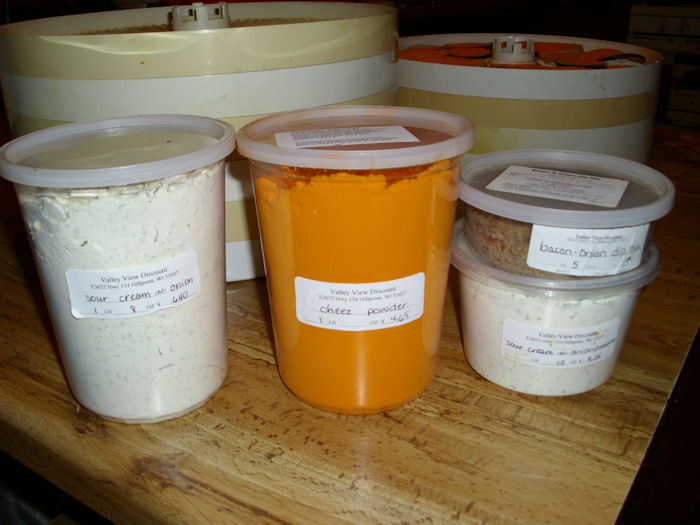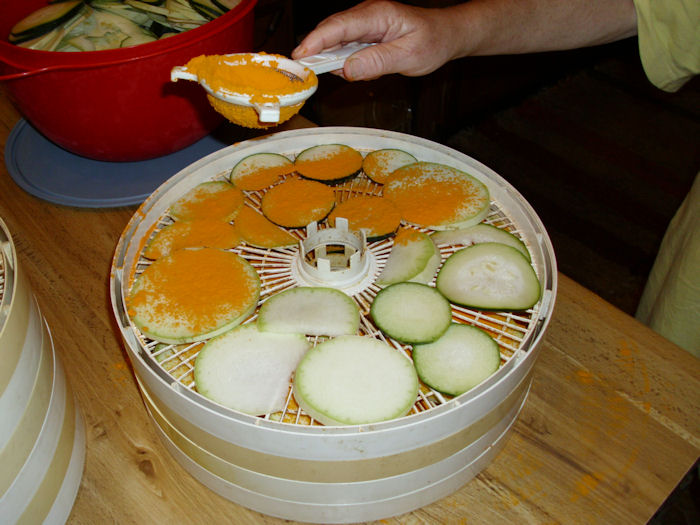Anyone can create work, but it takes some effort to create fun at times. It wasn’t very long after we started becoming self-sufficient that I discovered there would be a time each year where I’d need to work full time at helping Rebecca preserve the food from our orchard and garden. Of course, most people turn such events into work. After all, you’re working relatively long hours lifting heavy things in high temperatures and humidity. This is coupled with the repetitive motions needed to peel fruit and mixed with a bit of boredom waiting for things to happen—at least, that’s what happens if you’re most people. We’ve turned the event into Harvest Festival—a party of sorts that we have every year. It has turned into my second favorite week of the year, right behind Christmas week, which will always remain my favorite.
So, what makes this week so special? Well, it starts out with some special mugs and music. We use festive mugs during Harvest Festival that we don’t really use any other time of the year, except when we’re performing other food preservation tasks. In short, these mugs are special. The music is similarly special. Yes, we do listen to some of it at other times, but the collection as a whole is reserved for Harvest Festival. Rebecca also sets the mood with scented candles that give the house a warm feeling.
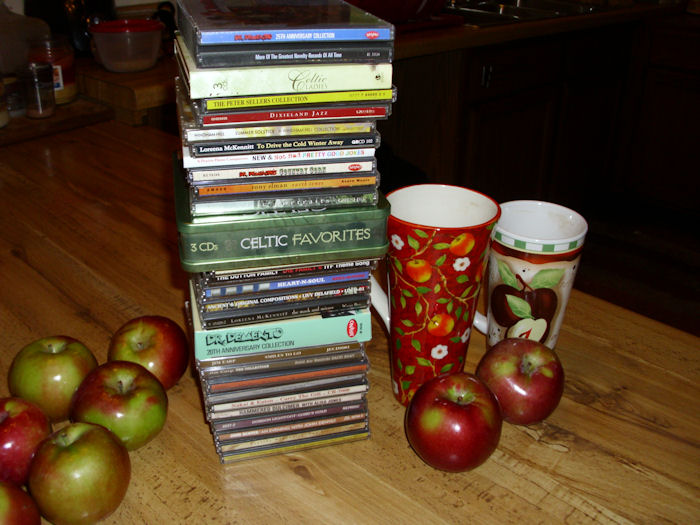
There are also times where we’re waiting for something to happen. We could probably get other work done, but we’re already working pretty hard, so some fun is in order. Rebecca and I play an interesting sort of Backgammon called Acey-Ducey that I learned while in the Navy. It’s easy to learn and a lot of fun to play. The games are short, so you can play a number of them quickly. Because the game is a mix of skill and chance, no one has the corner on winning. Of course, we have to drink some apple cider while we’re playing.

The festival begins by picking the fruit from our trees. In fact, the entire first day is spent outside at the fruit trees. Some of the fruit is quite high, so I have to use a fruit picker to get it.

After the fruits and vegetables are in the house (or at least enough to get started), we’ll start processing it. Just how we accomplish that task depends on what we’re making at the time. Rebecca started this year with pear-sauce (think applesauce made with pears). We also made pear chunks, applesauce, apple chips, apple rings, apple jam, and a host of other fruit-related confections for the larder.
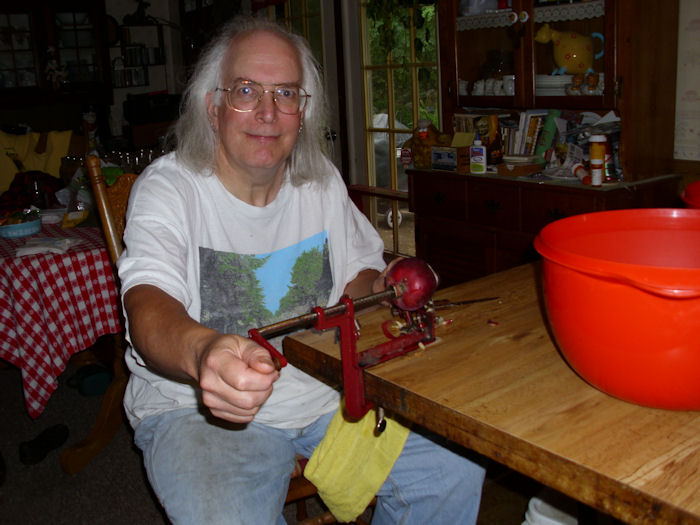
Our “kids” get involved with Harvest Festival too. The dogs are especially fond of apple spaghetti, which is the long streamer of peel that comes off of the apple. Here’s Shelby enjoying some apple spaghetti.

The kids are known to do all sorts of cute things during Harvest Festival. Sometimes they’ll sit with us; other times they’ll make strange noises or grab attention in some other way. Smucker decided that he was going to be extra cute to get snack from us.

Bubba has decided that he really likes Reese’s kennel, which has Reese confused, but us laughing. We found Bubba in the kennel quite a few times during Harvest Festival.
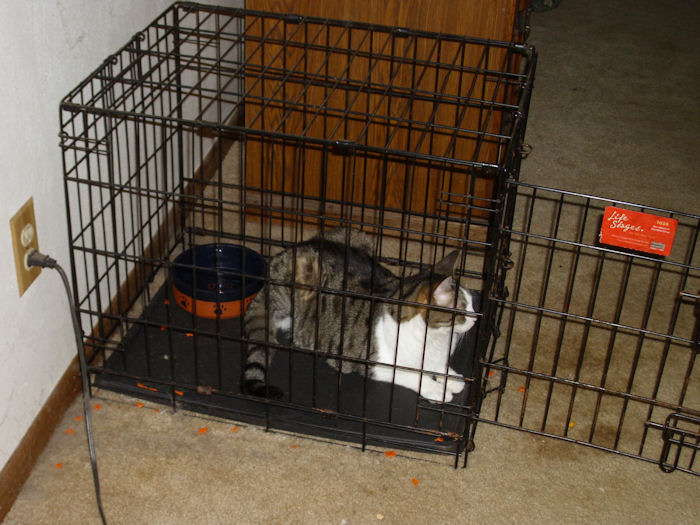
Because the stove is being used to process food, we don’t have any place to cook—at least, not in the house. I try to barbecue each day during Harvest Festival so we have special food as well. Normally, we don’t get any beef, but I decided to make some really thick and juicy burgers for us one day. There is also plenty of nibbling going on with all of the available fruit. Although we keep some fruit for fresh eating, I think we eat the most fresh fruit during Harvest Festival, which makes the week quite special for that reason alone.
The result of all our work is jar upon jar of food for the larder. One of my favorites this year is the pear chunks. Rebecca makes regular, minted, and spiced. They’re all different colors to make them easy to find on the shelves.
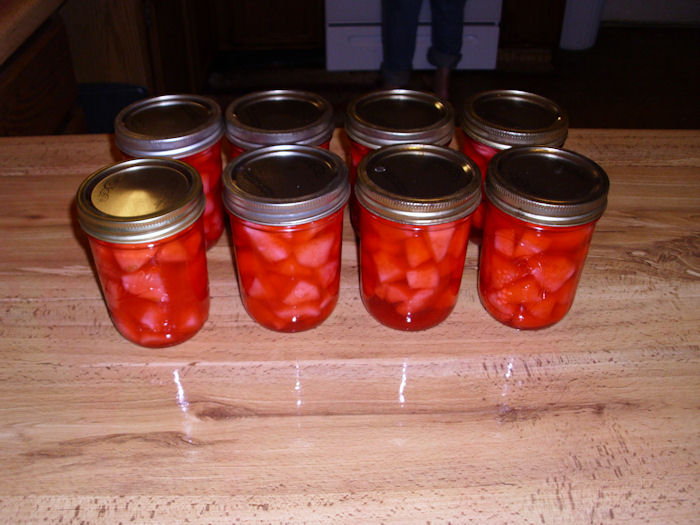
This year we processed 500 pounds of fruit, 480 pounds of tomatoes, 72 pounds of chicken, too many zucchinis to count, and a variety of other items all in one week. The result is that our larder is looking pretty nice (this is just half of the shelves—we also have two freezers and dry storage areas).
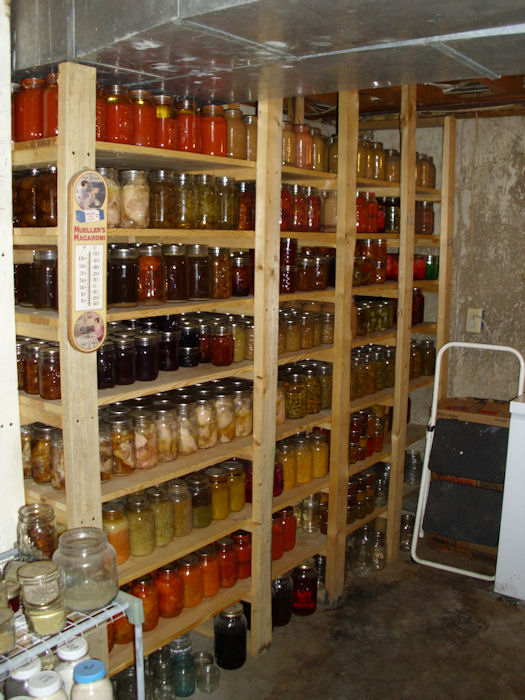
There is still more to process in the garden. The beans are drying at this point. We’ll also be digging potatoes soon. I’m sure the zucchinis will produce a little more and the winter squash needs to be picked. However, Harvest Festival is our big push for the season and we have a lot of fun getting the food from our gardens and orchards to the larder. If you’re planning on a self-sufficient lifestyle, you’ll probably find a similar need for a “big push” week at some point during the season, depending on what you grow. Let me know if you have any question at [email protected].











